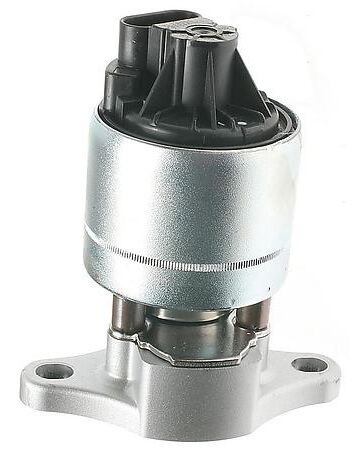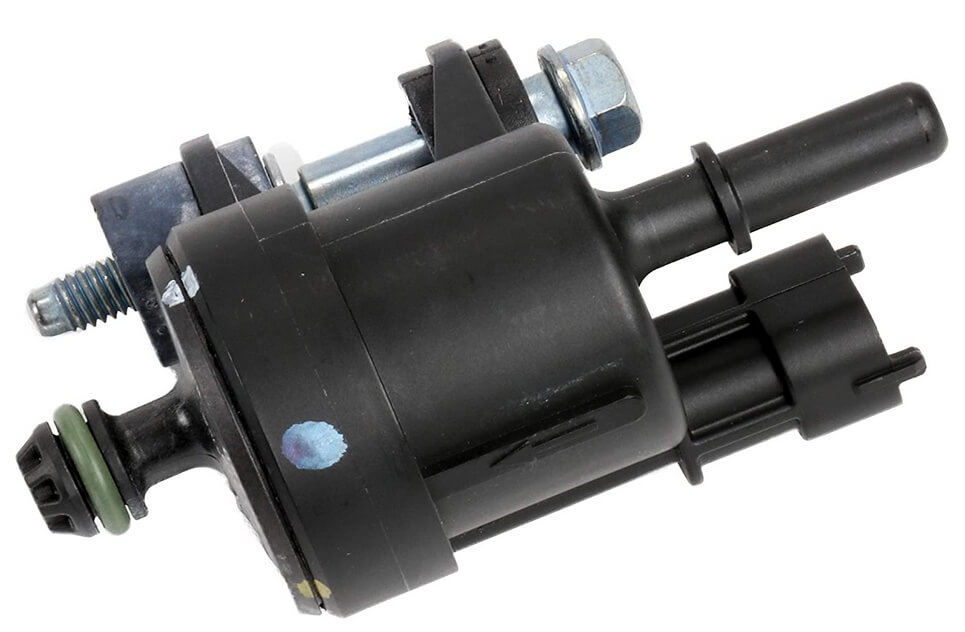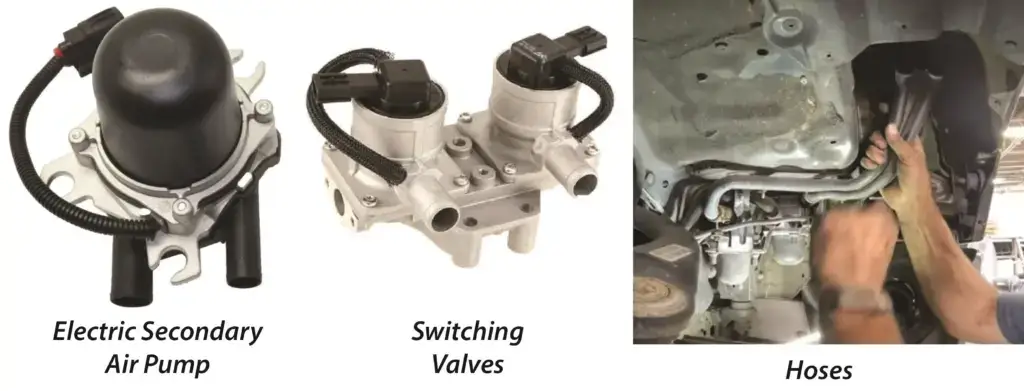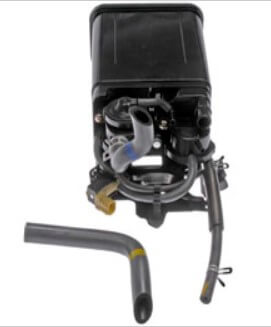Generic OBDII P Codes P0400-P0499
Learn the code definitions and most common causes for Generic OBDII P Codes P0400-P0499
This post lists the most common trouble codes in the OBDII P Codes P0400-P0499 category. These are Auxiliary Emissions-related trouble codes. Start by reading the most common codes and causes, and then refer to the code chart at the end of the post for official code definitions.
How to find your P Codes P0400-P0499 definition
There are 170 400-series codes. There are several ways to find the code definition in the chart below.
1) Enter the trouble code in the search box. That’s the fastest way
2) If you’d like to scroll all the codes, change the Number of entries to show on the page in “Show Entries” box. Click NEXT or PREVIOUS at the bottom right of the table

This graphic shows the three ways you can navigate the refrigerant chart: 1) Increase the number of entries, enter the year of your vehicle in the search box, or scroll the chart using the next/previous buttons at the bottom of the chart
| Codes & Definitions |
|---|
| P0400 Exhaust Gas Recirculation Flow Malfunction |
| P0401 Exhaust Gas Recirculation Flow Insufficient Detected |
| P0402 Exhaust Gas Recirculation Flow Excessive Detected |
| P0403 Exhaust Gas Recirculation Circuit Malfunction |
| P0404 Exhaust Gas Recirculation Circuit Range/Performance |
| P0405 Exhaust Gas Recirculation Sensor A Circuit Low |
| P0406 Exhaust Gas Recirculation Sensor A Circuit High |
| P0407 Exhaust Gas Recirculation Sensor B Circuit Low |
| P0408 Exhaust Gas Recirculation Sensor B Circuit High |
| P0409 Exhaust Gas Recirculation Sensor "A" Circuit |
| P040A Exhaust Gas Recirculation Temperature Sensor "A" Circuit |
| P040B Exhaust Gas Recirculation Temperature Sensor "A" Circuit Range/Performance |
| P040C Exhaust Gas Recirculation Temperature Sensor "A" Circuit Low |
| P040D Exhaust Gas Recirculation Temperature Sensor "A" Circuit High |
| P040E Exhaust Gas Recirculation Temperature Sensor "A" Circuit Intermittent/Erratic |
| P040F Exhaust Gas Recirculation Temperature Sensor "A"/"B" Correlation |
| P0410 Secondary Air Injection System Malfunction |
| P0411 Secondary Air Injection System Incorrect Flow Detected |
| P0412 Secondary Air Injection System Switching Valve A Circuit Malfunction |
| P0413 Secondary Air Injection System Switching Valve A Circuit Open |
| P0414 Secondary Air Injection System Switching Valve A Circuit Shorted |
| P0415 Secondary Air Injection System Switching Valve B Circuit Malfunction |
| P0416 Secondary Air Injection System Switching Valve B Circuit Open |
| P0417 Secondary Air Injection System Switching Valve B Circuit Shorted |
| P0418 Secondary Air Injection System Relay "A" Circuit Malfunction |
| P0419 Secondary Air Injection System Relay "B" Circuit Malfunction |
| P041A Exhaust Gas Recirculation Temperature Sensor "B" Circuit |
| P041B Exhaust Gas Recirculation Temperature Sensor "B" Circuit Range/Performance |
| P041C Exhaust Gas Recirculation Temperature Sensor "B" Circuit Low |
| P041D Exhaust Gas Recirculation Temperature Sensor "B" Circuit High |
| P041E Exhaust Gas Recirculation Temperature Sensor "B" Circuit Intermittent/Erratic |
| P041F Secondary Air Injection System Switching Valve "A" Circuit Low |
| P0420 Catalyst System Efficiency Below Threshold (Bank 1) |
| P0421 Warm Up Catalyst Efficiency Below Threshold (Bank 1) |
| P0422 Main Catalyst Efficiency Below Threshold (Bank 1) |
| P0423 Heated Catalyst Efficiency Below Threshold (Bank 1) |
| P0424 Heated Catalyst Temperature Below Threshold (Bank 1) |
| P0425 Catalyst Temperature Sensor (Bank 1, Sensor 1) |
| P0426 Catalyst Temperature Sensor Range/Performance (Bank 1, Sensor 1) |
| P0427 Catalyst Temperature Sensor Low (Bank 1, Sensor 1) |
| P0428 Catalyst Temperature Sensor High (Bank 1, Sensor 1) |
| P0429 Catalyst Heater Control Circuit (Bank 1) |
| P042A Catalyst Temperature Sensor Circuit (Bank 1 Sensor 2) |
| P042B Catalyst Temperature Sensor Circuit Range/Performance (Bank 1 Sensor 2) |
| P042C Catalyst Temperature Sensor Circuit Low (Bank 1 Sensor 2) |
| P042D Catalyst Temperature Sensor Circuit High (Bank 1 Sensor 2) |
| P042E Exhaust Gas Recirculation "A" Control Stuck Open |
| P042F Exhaust Gas Recirculation "A" Control Stuck Closed |
| P0430 Catalyst System Efficiency Below Threshold (Bank 2) |
| P0431 Warm Up Catalyst Efficiency Below Threshold (Bank 2) |
| P0432 Main Catalyst Efficiency Below Threshold (Bank 2) |
| P0433 Heated Catalyst Efficiency Below Threshold (Bank 2) |
| P0434 Heated Catalyst Temperature Below Threshold (Bank 2) |
| P0435 Catalyst Temperature Sensor Circuit Malfunction (Bank 2, Sensor 1) |
| P0436 Catalyst Temperature Sensor Circuit Range/Performance (Bank 2, Sensor 1) |
| P0437 Catalyst Temperature Sensor Circuit Low (Bank 2, Sensor 1) |
| P0438 Catalyst Temperature Sensor Circuit High (Bank 2, Sensor 1) |
| P0439 Catalyst Heater Control Circuit (Bank 2) |
| P043A Catalyst Temperature Sensor Circuit (Bank 2 Sensor 2) |
| P043B Catalyst Temperature Sensor Circuit Range/Performance Bank 2 Sensor 2) |
| P043C Catalyst Temperature Sensor Circuit Low (Bank 2 Sensor 2) |
| P043D Catalyst Temperature Sensor Circuit High (Bank 2 Sensor 2) |
| P043E Evaporative Emission System Leak Detection Reference Orifice Low Flow |
| P043F Evaporative Emission System Leak Detection Reference Orifice High Flow |
| P0440 Evaporative Emission Control System Malfunction |
| P0441 Evaporative Emission Control System Incorrect Purge Flow |
| P0442 Evaporative Emission Control System Leak Detected (small leak) |
| P0443 Evaporative Emission Control System Purge Control Valve Circuit |
| P0444 Evaporative Emission Control System Purge Control Valve Circuit Open |
| P0445 Evaporative Emission Control System Purge Control Valve Circuit Shorted |
| P0446 Evaporative Emission Control System Vent Control Circuit Malfunction |
| P0447 Evaporative Emission Control System Vent Control Circuit Open |
| P0448 Evaporative Emission Control System Vent Control Circuit Shorted |
| P0449 Evaporative Emission Control System Vent Valve/Solenoid Circuit Malfunction |
| P044A Exhaust Gas Recirculation Sensor "C" Circuit |
| P044B Exhaust Gas Recirculation Sensor "C" Circuit Range/Performance |
| P044C Exhaust Gas Recirculation Sensor "C" Circuit Low |
| P044D Exhaust Gas Recirculation Sensor "C" Circuit High |
| P044E Exhaust Gas Recirculation Sensor "C" Circuit Intermittent/Erratic |
| P044F Secondary Air Injection System Switching Valve "A" Circuit High |
| P0450 Evaporative Emission Control System Pressure Sensor Malfunction |
| P0451 Evaporative Emission Control System Pressure Sensor Range/Performance |
| P0452 Evaporative Emission Control System Pressure Sensor Low Input |
| P0453 Evaporative Emission Control System Pressure Sensor High Input |
| P0454 Evaporative Emission Control System Pressure Sensor Intermittent |
| P0455 Evaporative Emission Control System Leak Detected (gross leak) |
| P0456 Evaporative Emissions System Small Leak Detected |
| P0457 Evaporative Emission Control System Leak Detected |
| P0458 Evaporative Emission System Purge Control Valve Circuit Low |
| P0459 Evaporative Emission System Purge Control Valve Circuit High |
| P045A Exhaust Gas Recirculation "B" Control Circuit |
| P045B Exhaust Gas Recirculation "B" Control Circuit Range/Performance |
| P045C Exhaust Gas Recirculation "B" Control Circuit Low P045D Exhaust Gas |
| Recirculation "B" Control Circuit High |
| P045E Exhaust Gas Recirculation "B" Control Stuck Open |
| P045F Exhaust Gas Recirculation "B" Control Stuck Closed |
| P0460 Fuel Level Sensor Circuit Malfunction |
| P0461 Fuel Level Sensor Circuit Range/Performance |
| P0462 Fuel Level Sensor Circuit Low Input |
| P0463 Fuel Level Sensor Circuit High Input |
| P0464 Fuel Level Sensor Circuit Intermittent |
| P0465 Purge Flow Sensor Circuit Malfunction |
| P0466 Purge Flow Sensor Circuit Range/Performance |
| P0467 Purge Flow Sensor Circuit Low Input |
| P0468 Purge Flow Sensor Circuit High Input |
| P0469 Purge Flow Sensor Circuit Intermittent |
| P046A Catalyst Temperature Sensor 1/2 Correlation (Bank 1) |
| P046B Catalyst Temperature Sensor 1/2 Correlation (Bank 2) |
| P046C Exhaust Gas Recirculation Sensor "A" Circuit Range/Performance |
| P046D Exhaust Gas Recirculation Sensor "A" Circuit Intermittent/Erratic |
| P046E Exhaust Gas Recirculation Sensor "B" Circuit Range/Performance |
| P046F Exhaust Gas Recirculation Sensor "B" Circuit Intermittent/Erratic |
| P0470 Exhaust Pressure Sensor "A" Circuit |
| P0471 Exhaust Pressure Sensor "A" Circuit Range/Performance |
| P0472 Exhaust Pressure Sensor "A" Circuit Low |
| P0473 Exhaust Pressure Sensor "A" Circuit High |
| P0474 Exhaust Pressure Sensor "A" Circuit Intermittent |
| P0475 Exhaust Pressure Control Valve "A" |
| P0476 Exhaust Pressure Control Valve "A" Range/Performance |
| P0477 Exhaust Pressure Control Valve "A" Low |
| P0478 Exhaust Pressure Control Valve "A" High |
| P0479 Exhaust Pressure Control Valve "A" Intermittent |
| P047A Exhaust Pressure Sensor "B" Circuit |
| P047B Exhaust Pressure Sensor "B" Circuit Range/Performance |
| P047C Exhaust Pressure Sensor "B" Circuit Low |
| P047D Exhaust Pressure Sensor "B" Circuit High |
| P047E Exhaust Pressure Sensor "B" Circuit Intermittent/Erratic |
| P047F Exhaust Pressure Control Valve "A" Stuck Open |
| P0480 Cooling Fan I Control Circuit Malfunction |
| P0481 Cooling Fan 2 Control Circuit Malfunction |
| P0482 Cooling Fan 3 Control Circuit Malfunction |
| P0483 Cooling Fan Rationality Check Malfunction |
| P0484 Cooling Fan Circuit Over Current |
| P0485 Cooling Fan Power/Ground Circuit Malfunction |
| P0486 Exhaust Gas Recirculation Sensor "B" Circuit |
| P0487 Exhaust Gas Recirculation Throttle Control Circuit "A" Open |
| P0488 Exhaust Gas Recirculation Throttle Control Circuit "A" Range/Performance |
| P0489 Exhaust Gas Recirculation "A" Control Circuit Low |
| P048A Exhaust Pressure Control Valve "A" Stuck Closed |
| P048B Exhaust Pressure Control Valve Position Sensor/Switch Circuit |
| P048C Exhaust Pressure Control Valve Position Sensor/Switch Circuit Range/Performance |
| P048D Exhaust Pressure Control Valve Position Sensor/Switch Circuit Low |
| P048E Exhaust Pressure Control Valve Position Sensor/Switch Circuit High |
| P048F Exhaust Pressure Control Valve Position Sensor/Switch Circuit Intermittent/Erratic |
| P0490 Exhaust Gas Recirculation "A" Control Circuit High |
| P0491 Secondary Air Injection System Insufficient Flow Bank 1 |
| P0492 Secondary Air Injection System Insufficient Flow Bank 2 |
| P0493 Fan Overspeed P0494 Fan Speed Low P0495 Fan Speed High |
| P0496 EVAP Flow During A Non-Purge Condition |
| P0497 Evaporative Emission System Low Purge Flow |
| P0498 Evaporative Emission System Vent Valve Control Circuit Low |
| P0499 Evaporative Emission System Vent Valve Control Circuit High |
| P049A Exhaust Gas Recirculation "B" Flow |
| P049B Exhaust Gas Recirculation "B" Flow Insufficient Detected |
| P049C Exhaust Gas Recirculation "B" Flow Excessive Detected |
| P049D Exhaust Gas Recirculation "A" Control Position Exceeded Learning Limit |
| P049E Exhaust Gas Recirculation "B" Control Position Exceeded Learning Limit |
| P049F Exhaust Pressure Control Valve "B" |
| P04A0 Exhaust Pressure Control Valve "B" Range/Performance |
| P04A1 Exhaust Pressure Control Valve "B" Low |
| P04A2 Exhaust Pressure Control Valve "B" High |
| P04A3 Exhaust Pressure Control Valve " B" Intermittent |
| P04A4 Exhaust Pressure Control Valve "B" Stuck Open |
| P04A5 Exhaust Pressure Control Valve "B" Stuck Closed |
| P04A6 Exhaust Pressure Control Valve "B" Position Sensor/Switch Circuit |
| P04A7 Exhaust Pressure Control Valve "B" Position Sensor/Switch Circuit Range/Performance |
| P04A8 Exhaust Pressure Control Valve "B" Position Sensor/Switch Circuit Low |
| P04A9 Exhaust Pressure Control Valve "B" Position Sensor/Switch Circuit High |
| P04AA Exhaust Pressure Control Valve "B" Position Sensor/Switch Circuit Intermittent/Erratic |
| P04AB - P04FF ISO/SAE Reserved |
I’ll start by discussing the most common Trouble codes in this group, along with the most common causes of those codes.
The most common causes of OBDII P Codes P0400-P0499
P0400 – P0409 Exhaust Gas Recirculation (EGR) trouble codes are very common
Carmakers use exhaust gas recirculation to cycle some of the exhaust gasses back into the combustion chamber to reduce combustion temperatures and reduce oxides of nitrogen emissions. The ECM commands the EGR valve to open when certain conditions are met. Depending on the vehicle, the valve can open in small increments Based on engine vacuum, a varying voltage, or a digital signal.
When the ECM commands EGR, it expects to see a change in engine rpm and a return signal from the EGR valve confirming that the valve opened as much as the ECM commanded. The EGR valve reports this based on an internal position sensor. The sensor is a common source of failures. In many cases, especially in Chrysler vehicles, the positioned sensor fails to report the correct amount of opening in the EGR valve.
Diagnosing an EGR-related trouble code
The most common cause of an EGR related trouble code

This is an electrically operated EGR valve with a position sensor mounted on the top of the valve. The sensor is a high failure point
is a failure of the valve itself or the position sensor inside the valve. In either case the valve must be replaced. Lots of DIYers have tried to clean the valve, but have very little success because the problem usually isn’t caused by carbon buildup.
Start by checking for corrosion in the electrical connector to the EGR valve. If that looks good, remove the EGR valve and check for a clogged exhaust port directly under the EGR valve. If the port is clear, replace the EGR valve.
For more information on how an EGR valve works, see this article
For more information on a P0400 code see this article
For more information on a P0401 code see this article
For more information on a P0404 code see this article
For more information on how the EGR readiness monitor works see this article
P0410 – P0419 Secondary Air codes are common
Carmakers often use secondary air during cold startups
to help the catalytic converter get up to full operating temperature faster. During a cold start, the engine needs a rich mixture. However, a good portion of that extra fuel winds up in the catalytic converter. That causes a situation where the catalytic converter is filled with fuel but doesn’t have enough oxygen or heat to burn it off. To correct the situation and reduce cold start emissions, carmakers add an air injection reaction (A.I.R) pump and a set of valves to pump outside air into the exhaust manifold, thereby introducing extra oxygen for the catalytic converter.
The most common causes of secondary air trouble codes
The secondary air system consists of an electrically driven air pump, solenoid switching valves and tubing. The switching valves are used to allow air to enter the exhaust manifold when the system is in use but close off when secondary air is no longer needed. When the valves are closed exhaust can’t back flow through the air pump.
The air pump and the valves are common failure points. Moisture from humid weather can cause corrosion inside the valves and the pump.
Diagnose secondary air components
The easiest way to diagnose secondary air trouble codes is to use jumpers to provide power and ground to the air pump and the switching valves to see if they operate properly. If not they must be replaced.
For more information on how secondary air systems work see this article
For more information on the secondary air readiness monitor see this article
P0420 & P0430 Catalytic Converter Codes are very common
These two codes indicate that the ECM has tested the catalytic converter and determined it is not operating properly based on information from the downstream oxygen sensor. The most common mistake DIYers make when diagnosing this code is to assume that the cause is a bad upstream oxygen sensor. Ninety-nine percent of the time, these codes are not caused by a faulty oxygen sensor. On the contrary, the ECM needs to see good data from the oxygen sensors in order to test the catalytic converter. If the upstream oxygen sensor were bad, the ECM would set an oxygen sensor code, not a catalytic converter code.
How to diagnose a P0420 or P0430 catalytic converter code
High fuel trims can cause these codes
If the ECM is adding too much fuel to the engine, that excess fuel will wind up in the catalytic converter and cause a P0420 or a P0430 trouble code. So, your first step is to look at the long-term fuel trims in the live data of a scant tool. If fuel trims are above 10%, find the cause and fix it before proceeding to diagnose the catalytic converters any further.
An exhaust leak can cause these codes
If the long-term fuel trims are in the normal range, your next step is to check for an exhaust leak. Any unmetered air entering the exhaust ahead of the catalytic converter can cause a P0420 or a P0430 code.
Older Subarus are the exception
The ECM’s in older Subaru vehicles can set a P0420 code due to a faulty oxygen sensor. This is because the software in older Subarus is not set up to test the upstream oxygen sensor. Subaru is the exception to the rule that a catalytic converter code would never be caused by a bad oxygen sensor.
For more information on how the ECM sets a P0420 or a P0430 code, see this article
For additional help in diagnosing a catalytic converter code, see this article
P0440 – P0449 Evaporative Emissions Codes are very common
The evaporative emission system reduces air pollution by absorbing fuel vapors that would otherwise escape into the atmosphere when filling your tank with gas. The system includes a charcoal canister, a purge valve, and an event valve. During fillup, the fuel vapors are absorbed by the activated charcoal inside the charcoal canister. After the fillup, the ECM opens the purge valve and the vent valve. The engine vacuum then sucks the fuel vapors out of the charcoal canister, replacing it with fresh air that enters through the vent valve.
The most common causes of Evaporative Emissions Codes
• A stuck open or stuck closed purge valve is a common cause of evaporative emissions codes.
• A stuck open or closed vent valve is also a common cause of evaporative emissions codes.
• A damaged hose from the fuel tank to the canister or a damaged hose from the canister to the purge valve can cause a leak which sets an evaporative emissions code.
• A damaged charcoal canister A damaged charcoal canister can cause emissions codes but this is not a common failure point.
Diagnose an evaporative emissions code
P0441, P0443, P0444, and P0445 are purge valve codes. The Problem can be with the valve itself or the wiring to the valve. Using jumper wires for power and ground, operate the purge valve to see if it  opens and closes. Next, use a hand-held vacuum pump to apply vacuum to this purge valve to see if it holds. For most of these codes the problem is a faulty purge valve.
opens and closes. Next, use a hand-held vacuum pump to apply vacuum to this purge valve to see if it holds. For most of these codes the problem is a faulty purge valve.
P0445, P0446, P0447, P0448, P0449 are vent valve codes. The vent valve operates much like the purge valve but it is prone to clogging do to Spider nests in thee valve inlet. Start your diagnosis by checking for spider nests in the vent valve inlet. If the inlet is clean, use jumper wires for power and ground to operate the vent valve. If the valve fails to open or close replace it.
©, 2024 Rick Muscoplat
Posted on by Rick Muscoplat

